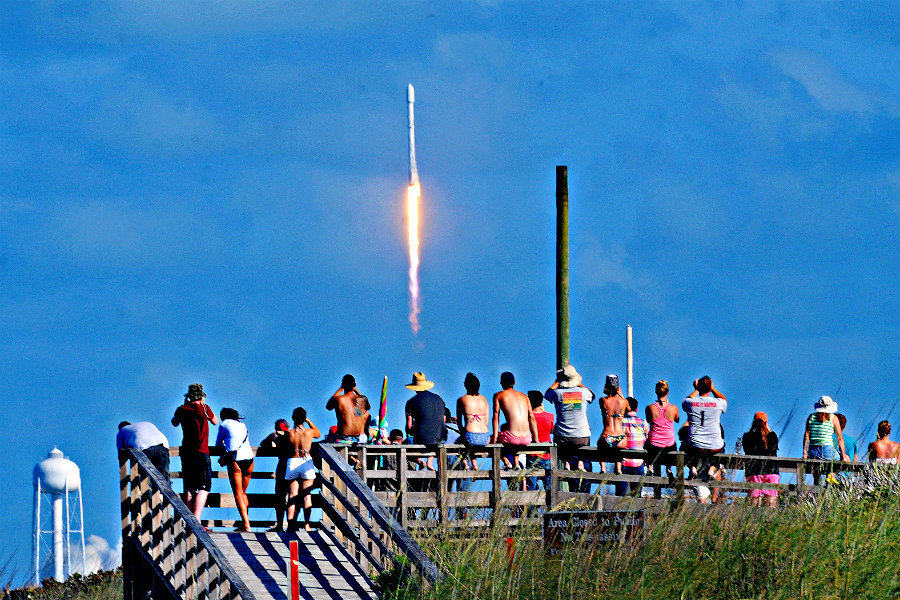SpaceX sticks third sea landing of 2016: Is it a reliable business model?
Loading...
Elon Musk’s SpaceX Falcon 9 rocket stuck another landing last night, its third this year. With a handful of successes under its belt, is SpaceX one step closer to providing more affordable spaceflight service?
SpaceX streamed video of the rocket’s launch and landing last night via its website. Viewers were able to watch the Falcon 9 rocket take off with its massive payload, a 6,669 pound Thaicom 8 communications satellite, which it carried into geosynchronous orbit about 22,000 miles above Earth's surface.
After delivering its payload, the rocket headed back to Earth. The speed and altitude required to launch the communications satellite raised the degree of difficulty for a successful landing for the rocket's first stage.
The company expressed cautious optimism before the landing, saying that "the first stage will be subject to extreme velocities and re-entry heating, making a successful landing challenging,” reported the Chicago Tribune.
Despite the slim odds of success, the rocket landed on a drone ship 422 miles from shore – a successful return, if a rough one.
This is the company’s third successful sea landing on the drone barge called “Of Course I Still Love You,” and thus far, the landings have been similar.
Friday night’s flight was, according to both Mr. Musk and other company officials, very similar to the company’s previous one.
Both rockets entered the atmosphere quickly. The previous landing, on May 6, saw the Falcon 9 rocket reenter the atmosphere at 3,915 miles per hour. Although that landing was successful, it left the rocket moderately crippled from its journey.
According to Musk, the May 6 rocket “took max damage,” though SpaceX engineer Lauren Lyons stated that the landing showed that high velocity landings are not impossible.
The company’s most recent rocket landing used up most of the rocket’s contingency crush core, which is an aluminum honeycomb inside the rocket that exists to prevent even greater rocket damage upon landing, according to tweets by Musk.
Nevertheless, the most recent three rocket launches have all led to safe landings, supporting SpaceX's claims to have successfully created a reusable rocket.
What does this triplet of successful barge landings mean for SpaceX?
When the company first began trying to land rockets on ships, others thought they were crazy, especially after initial landing attempts were unsuccessful.
But SpaceX entered the reusable rocket game for a reason, and they refused to give up.
If the first stage of its Falcon 9 rockets can be recovered, instead of being lost at sea or burned up in the atmosphere, it will massively reduce spaceflight costs, making trips into space more accessible for future generations.
"I think it's another step toward the stars," said Musk in a press briefing after the first rocket landing. "In order for us to really open up access to space, we've got to achieve full and rapid reusability. And to be able to do that for the primary rocket booster is going to [have] a huge impact on cost."
Musk says that reusing the first stage of the rocket can reduce costs by a factor of 100, or, as chief operating officer Gwynne Shotwell puts it, tens of millions of dollars.
Rockets cost around $60 million, according to an April article in the Christian Science Monitor, but refueling only costs between $200,000 and $300,000. That’s a massive difference, and SpaceX executives say it could make all the difference to the future of space travel.
SpaceX hopes to be able to land rockets on Mars within a decade.
[Editor's note: A previous version of this story misstated the height reached by the Falcon 9 rocket.]








